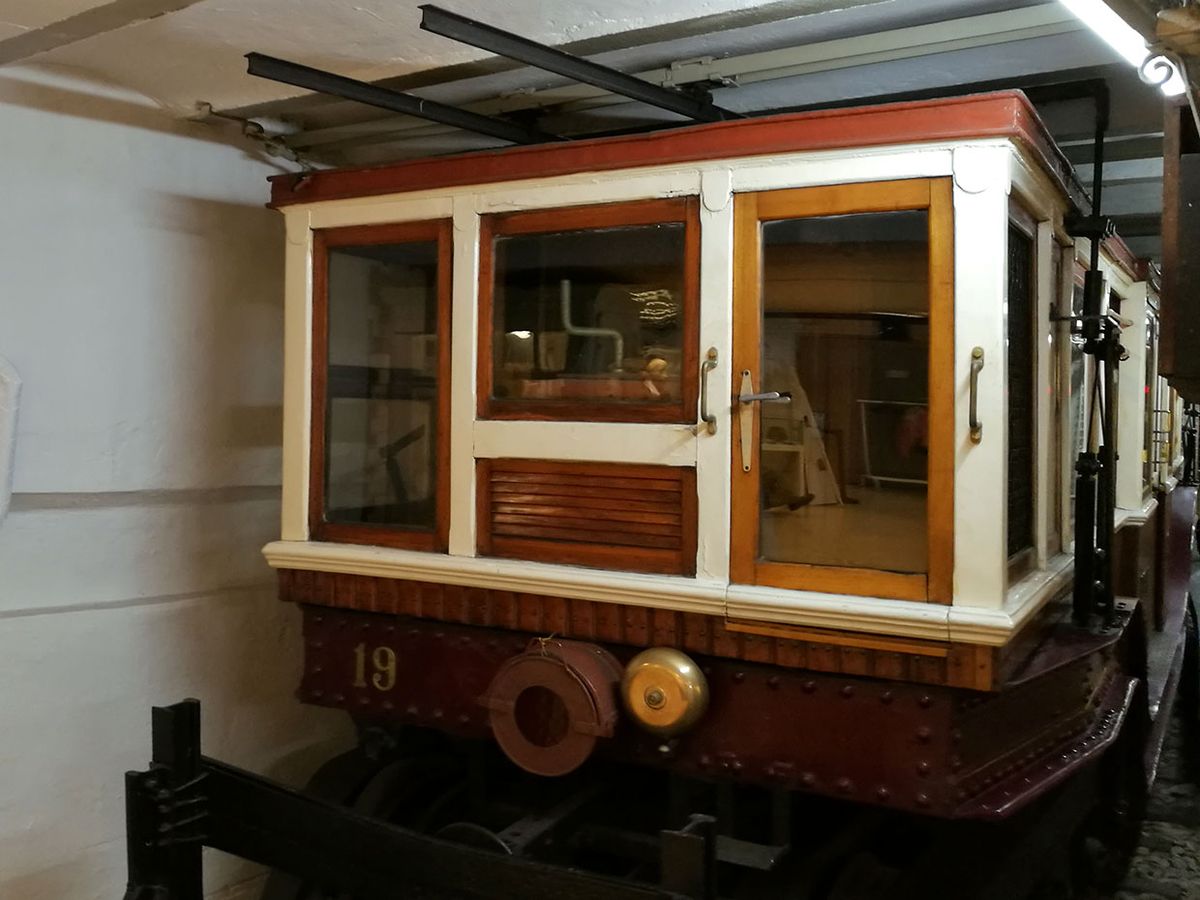THE INSTITUTE As Budapest’s population grew in the late 1800s, the streets were becoming congested with horse-pulled and electric tramways. The city’s leaders began looking for a convenient way for people to travel across the city that would alleviate congestion on the roads. Their solution was to construct a public transportation system underground.
It took a little less than two years to build an electric underground railway: the Budapest Metro Line No. 1 system. The first such railway in continental Europe, it began operating in 1896.
The tunnel it used was constructed using modern tools such as electric cement mixers and excavators.
Among the railway’s innovative elements were bidirectional tram cars; electric lighting in the subway stations and tram cars; and an overhead wire structure instead of a third-rail system for power.
The Budapest line, still in use today more than 120 years after its inauguration, is now an IEEE Milestone.
Administered by the IEEE History Center and supported by donors, the Milestone program recognizes outstanding technical developments around the world. The IEEE Hungary Section was the sponsor.
“The railway system influenced the construction and design of subways in Boston, Buenos Aires, Paris, and other cities around the globe,” says IEEE Senior Member Peter Kadar, the section’s Milestone coordinator.
The dedication ceremony, originally planned for 25 March at the Budapest Underground Railway Museum, was postponed indefinitely due to the COVID-19 pandemic.
THE TUNNEL
The metro line runs underneath Andrassy Avenue, which connects the city center—Vorosmarty Square—to City Park. Back in the 1890s, the avenue allowed only pedestrian traffic, so city leaders decided that would be an ideal location to start construction, which began in 1894.
The main sewerage canal that ran underneath the avenue presented a challenge, Kadar says: It limited how tall the tunnel could be. Workers had to use the “cut and cover” approach to build the structure. They dug a shallow trench and constructed the tunnel inside it. The street was rebuilt over the tunnel once the structure was complete. It was the first time the “cut and cover” technique was used to create a tunnel under a main road, Kadar says.
Concrete reinforced with iron sheets was used instead of bricks to build the tunnel because it was lightweight, strong, and had a long lifespan, according to the Engineering and Technology History Wiki entry about the Milestone. The ferroconcrete also was used to build ticket booths, station platforms, and entrances for 11 metro stations along the 4-kilometer route.
It took 2,000 construction workers working double shifts to complete the project, which took only 21 months.
NEW INNOVATIONS
Although it was not the first underground train system, the Budapest Metro Line was the precursor to today’s subways. It was the first underground railway to use bidirectional tram cars—cabins on either end of the train, each with their own driver. Other underground trains at the time used locomotives with a single driver, who operated a crossover switch to shift the train to another track. That limited where the train could switch direction. The bidirectional carriages, however, gave drivers the ability to reverse direction when necessary, allowing more flexibility.
Existing tram cars were modified to accommodate the tunnel’s height constraints. Standard railway vehicles at the time were too tall for the 3-meter tunnel. Each tram car had two chassis that supported the vehicle and provided it with traction and braking but made the cars too large for the tunnel. To lower the cars’ height, the engineers built a low-floor chassis. It had fixed wheels attached to a small axle base as well as a motor and brake discs. Each carriage was connected by a goosenecked chassis, which used a ball and coupler.
The Budapest line was the world’s first low-floor tram, Kadar says.
To power the railway system, engineers installed overhead lines instead of laying a conventional third-rail system along the tracks. The trains used electric current collectors to connect with the overhead wires.
A power station was built on Akacfa Street, about five blocks south of Andrassy Avenue, where a 350-volt DC current was generated for the railway. The current powered the tram system as well as the lights in the cars and stations. Budapest was the first city in the world to use the electric current collector system underground.
The Milestone plaque will be displayed at the entrance of the first station, which is the site of the Budapest Underground Railway Museum. The plaque reads:
In 1896 Budapest Metro Line No. 1 was inaugurated, the first underground railway designed specifically to use electric power, rather than adapted from steam-powered systems. It offered several innovative elements including bidirectional motor carriages, the “gooseneck chassis,” and electric lighting in the stations and carriages. This line's design influenced later subway construction in Boston, Paris, Berlin, and other metropolitan areas worldwide.
This article was written with assistance from the IEEE History Center, which is funded by donations to the IEEE Foundation’s Realize the Full Potential of IEEE campaign.
Joanna Goodrich is the associate editor of The Institute, covering the work and accomplishments of IEEE members and IEEE and technology-related events. She has a master's degree in health communications from Rutgers University, in New Brunswick, N.J.



